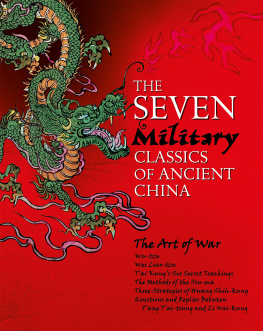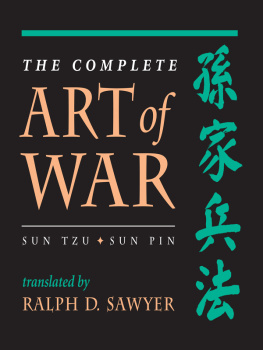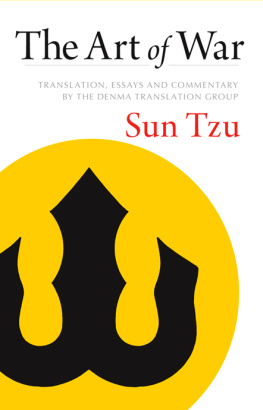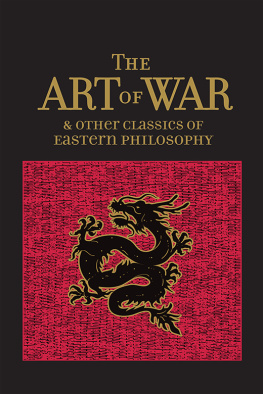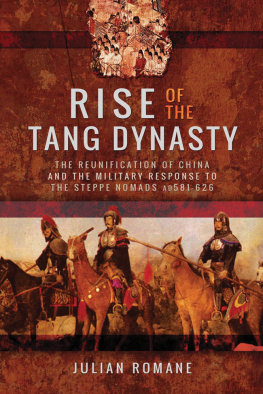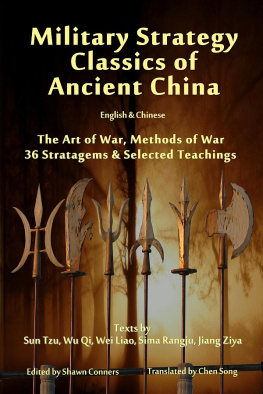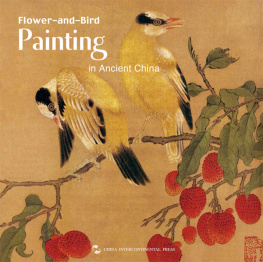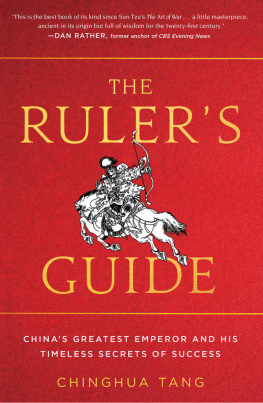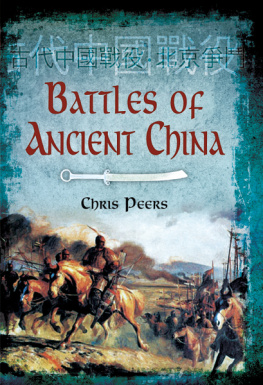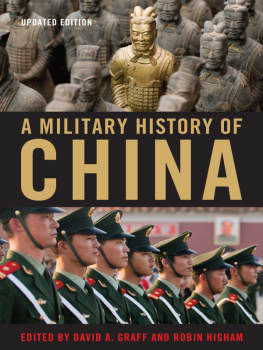The Seven Military Classics of Ancient China
Introduction
Combat and warfare have been features of civilization since mankind first evolved. It is no surprise that in every civilization, one finds debates, discussions, and discourses surrounding battle and warfare. Nowhere is this truer than in China, where scholars and rulers of successive empires facing the realities of combat and warfare, debated and discussed these matters for centuries.
Warfare was a fact of life for all premodern Chinese empires. Chinese history is the story of these empires, states, and dynasties that arose in periods of strife and conflict. They succeeded each other in warfare and relied on military might to consolidate their rule. The system of dynastic empires that marked Imperial China began with the establishment of the short-lived Qin Empire (221206 bce ), the first imperial dynasty, and its longer-lived successor the Han (206 bce 220 ce ) that established many of the basic principles and traditions of imperial rule. The Qin state existed for centuries before it established the first empire, existing uncomfortably alongside other polities that eventually fell prey to their ambition.
The Warring States
This period is today referred to as the Warring States (c. 475221 bce ), and it is from this period that many of the texts in this volume emerge. This period witnessed rapid technological change and social innovation. Warfare transformed from staged contests between individual opponents to large campaigns involving mobilized and specialized troops. The Trans-Eurasian trade brought metallurgical technology and horses from Central Asia, leading to advances in weaponry, particularly the crossbow, and the development and use of cavalry and charioteers.
The relatively flat lands of the North China plain, where most of these states were located, led to the development of complex defenses to make up for the lack of natural hills and waterways. These evolved into complex walls and fortifications, several of which served as precursors to the Great Wall built centuries later. These heavy fortifications also meant that not only were tactics and strategies necessary for campaigns against large armies, but also that siege warfare was a necessary and vital aspect of contemporary warfare.
The era also saw an expansion in literacy and scholarship. The development of bamboo as a cheap writing medium coupled with the increased need for educated bureaucrats and advisors led to the production of texts and the growth of communities of scholars. These communities were diverse and scattered among the many different states of the time, and the texts they produced discussed a wide variety of topics. Given that war and combat were facts of life, rulers naturally sought out advice and offered patronage to those who could help develop strategies and ensure success in these matters.
Imperial China
Both the Qin and the Han, and the empires that followed them, continued this trend of involving the burgeoning scholarly class in statecraft, recruiting them into their governments and patronizing academic endeavors through promoting writing, establishing schools and academies, and even supporting academic projects. Alongside these developments were military campaigns that saw the deployment of large-scale armies made up of infantry, cavalry, and archery troops alongside extensive wall and fortification building campaigns, just as had occurred in the Warring States that preceded them.
These empires set the standard of including scholarly and ideological matters alongside their military and empire building projects, a pattern that would remain throughout all successive Chinese empires. By the time of the Song Dynasty (9601279 ce ), scholars in China were not mere imperial advisors or individuals hiding in ivory towers, but instead were the dominant social class of an empire entirely staffed and run by those trained in a standardized scholarly tradition. As the concerns and culture of these scholars increasingly shaped the vagaries of life, so too did they begin to shape and influence military tradition. Scholarly concerns of textuality, ideology, and philosophy became just as important as battlefield tactics, troop deployments, and military training with regard to combat and warfare. The discussion of the nature of texts, their provenance, and origin became an active part of providing advice and justifying the choice of tactics to the Emperor. It was in this rich interplay of perspectives that the Chinese military tradition was formed through the canonization of what became known as the Seven Military Classics .
The Seven Military Classics
Canonized in 1080 ce under the reign of Emperor Shenzong of the Song (r. 10671085 ce ), this collection of texts is as much a representation of scholarly activity in forming a military tradition as it is a matter of practical concern. Military matters played a dramatic role in the Song alongside its burgeoning intellectual community. The Song existed in a near constant state of conflict with their rivals the Liao (9071125 ce ) and Jin (11151234 ce ) empires, battling for control of China. But this canonization was done with texts that predated the Song and reflect the standardized intellectual traditions they developed, such as canonizing and anthologizing earlier texts, and considering those earlier texts as the primary font of knowledge. The seven chosen texts range from as early as the Warring States to the end of the Tang Dynasty (618907 ce ). They are complex texts made up of different components, as can be seen in Taigongs Six Secret Teachings (also known as the Liu Tao ), and have multiple versions and iterations, as in the case of The Art of War . Reading these texts yields much more than simply a list of military techniques. It provides an insight into the development of both text and thought on the subject.
The seven texts Taigongs Six Secret Teachings, The Methods of the Sima , The Art of War , Wuzi , Wei Liaozi , Three Strategies of Huang Shigong, and Questions and Replies Between Emperor Taizong of Tang and General Li Jing have been preserved as a body of knowledge on warfare and combat and their study forms the cornerstone of Chinese military tradition. They became required reading for those who sought military careers and martial success and are still read by world leaders today. The knowledge they contain is diverse and the manner in which they speak about military matters is at times complex. The seven texts come from many different time periods and scholarly communities, and they are informed by conventions and standards that would have been common at the time of their composition, though perhaps alien to later readers.
Taigongs Six Secret Teachings , though most likely composed in the Warring States, is purported to be the work of a general of antiquity, Jiang Ziya (11th century bce ), who aided in the overthrowing of the last tyrannical King of the Shang, Zhou (r. 10751046 bce ). Placed as the first chronologically amongst the seven, it is divided into six sections that blend ideological concerns with tactical necessities, a cornerstone of the seven. It is written from the perspective of the overthrow of a kingdom, that of the Shang ( c. 16001046 bce ), in keeping with its historical narrative.
The Methods of the Sima is attributed directly to the Warring States, though with much debate over its provenance, particularly many parts associated with the Han. It speaks much about the issue of ritual and propriety, directly relating those issues to military matters. It shows a strong concern with the organization of forces and the situations of battle over explicit tactics.
The Art of War is also attributed to the Warring States and specifically to a scholar-character known as Sunzi (554496 bce ). One of the more complex texts in the collection, it exists in multiple versions and is one of the most researched by scholars both modern and premodern. The text contains detailed discussions of not only military organisation and tactics, but also reconnaissance, geography, and espionage.
Next page
